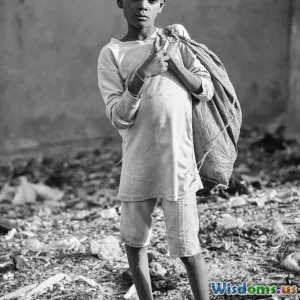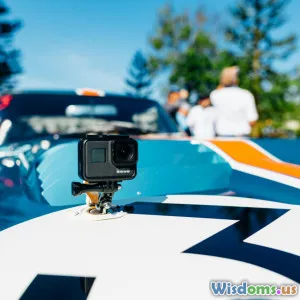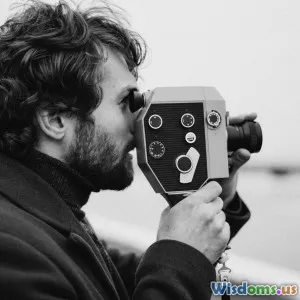
Working With Resistant Subjects Tips From Award Winning Filmmakers
12 min read Explore award-winning filmmakers’ proven strategies for working effectively with resistant subjects to achieve authentic, compelling storytelling and breakthrough results, featuring expert tips and real-life examples. (0 Reviews)
Working With Resistant Subjects: Tips From Award-Winning Filmmakers
Introduction: The Unseen Challenge Behind the Lens
On set, a director faces many challenges—tight budgets, harsh weather, dwindling daylight. But some of the toughest barriers aren’t technical—they’re human. Imagine you’ve discovered a story so gripping, a subject so essential, that you know their voice could spark conversation or even change lives. But there’s a problem: they don’t want to talk. They’re hesitant, worn out, distrustful, or downright resistant.
This isn’t just a risk for documentary makers or investigative reporters. Even fiction filmmakers working with amateur cast, or commercial directors behind-the-scenes with “real people,” can meet resistance. The ability to draw out the storylines that matter often depends less on technical prowess and more on psychological intuition, empathy, negotiation, and patience.
How do the world’s most acclaimed filmmakers win over their hardest subjects? What strategies do they use to build trust, manage setbacks, and ethically capture unguarded truth? Through insider quotes, notable examples, and practical advice, this guide shines a spotlight on the nuanced art of working with resistant subjects—so your next film isn’t just shot, but resonates.
Building Rapport: Breaking Down Barriers, Brick by Brick
The Foundation: Trust Takes Time
Oscar-winning documentarian Laura Poitras ("Citizenfour") describes her process as "never an interview—always a conversation that starts before the camera is on.” Poitras spent weeks earning the trust of Edward Snowden through encrypted chats, long before their first meeting. For difficult subjects, filmmakers underline the importance of patience and presence—sometimes just showing up repeatedly to demonstrate sincerity.
- Tip: Be unhurried. Don’t rush straight to hard questions. Share your own background, including why the subject’s voice matters.
Empathy as a Key: Meeting Subjects Where They Are
Director Nanfu Wang ("One Child Nation") recalls navigating suspicion in rural China by listening—truly listening—before recording. “I needed to know how they felt about me being there, first as a daughter of their culture, then as a filmmaker.”
- Example: Filmmaker Steve James (“Hoop Dreams”) spent months off-camera observing his subjects’ routines, eating meals with the families, and doing chores, before ever rolling film. This built a genuine sense of camaraderie.
- Tip: Mirror your subject’s tone and energy. If they are reticent, adopt a gentle and nonintrusive manner.
Small Talk, Big Result
Consider non-intrusive engagements before hitting ‘record’. Award-winning interviewer Louis Theroux is famous for arriving with the “wrong” questions at first—safe, easy, slightly off-topic—to let his subjects relax.
- Fact: The Harvard Negotiation Project indicates people are 60% more likely to open up if the first interaction is informal rather than transactional.
Gaining Consent: Negotiation and Integrity
Transparency as Non-negotiable
Errol Morris (“The Thin Blue Line”) is adamant: “Consent isn’t just a signature on a form, it’s an ongoing process.” Letting subjects understand their right to pause or walk away not only respects autonomy but can paradoxically increase buy-in, owing to reduced pressure.
- Example: In “Stories We Tell”, Sarah Polley offered her family editorial input, blurring lines between subject and storyteller. While you may opt for boundaries, sharing your intent (and potential reach of the film) often reduces defensiveness.
Addressing Fear and Misinformation
Some hard-near subjects are traumatized, marginalized, or mistrustful due to past misrepresentation. As a filmmaker, addressing fears is crucial.
- Tip: Tell them, and show them, how their voice will not be manipulated. Share your previous work if relevant, or set ground rules—such as “final cut” consultations.
Setting the Stage: Techniques That Ease Resistance
Controlling the Environment
Award-winning docs often pay careful attention to setting—filming in familiar, comfortable locales rather than sterile studios. This helps subjects feel a sense of control and safety.
- Real-World Insight: Ava DuVernay, on “13th,” sometimes let interviewees choose their own locations, resulting in more empowered, reflective participation.
Minimize the Intimidation Factor
Ample evidence suggests that large crews and imposing gear can intimidate. Albert Maysles (“Grey Gardens”) preferred a two-person crew, and communal meals with his subjects. Today, small digital cameras and even smartphones can fill this niche.
- Tip: Use the smallest crew possible, explaining each team member’s role. If practical, shoot alone or with just one trusted collaborator.
- Fact: Female-led productions (according to a 2021 Tribeca study) are statistically preferred by female subjects reporting previous traumas, thanks to perceived empathy and safety.
Strategic Questioning: The Fine Art of Inquiry
Shape the Story by Shaping the Interview
Resistant subjects frequently shut down under direct, confrontational questioning. Consider the “funnel technique,” opening with broad questions—“How was your morning?”—before narrowing the focus.
- Example: In “The Act of Killing”, Joshua Oppenheimer allowed his subjects to dictate the form of their on-screen confessions, unlocking stories conventional questioning could not reach.
Reading the Room
Legendary interviewer David Frost (famous for coaxing admissions from Richard Nixon) advocated observing micro-expressions. If a subject’s body language indicates stress, it may be time to pivot.
- Tip: Prepare B-roll alternatives or postponement slots if a session stalls. Demonstrate flexibility.
Use Silence and the Power of Pause
Editing can cut out awkward moments, but leaving uncomfortable silence in interviews often spurs participation. Filmmaker Kirby Dick (“The Invisible War”) lets moments hang, encouraging subjects to fill gaps with unexpected candor.
- Practical Advice: Fight the urge to immediately reframe or re-ask. Let pauses prompt self-reflection.
Handling Setbacks: when Resistance Becomes Refusal
Know When To Fold (Or Just Press Pause)
The most challenging cases—subjects who genuinely do not want to participate—require honest reassessment.
- Example: In “American Factory”, directors Jeff Reichert and Steven Bognar lost access to their main subject midway, forcing them to pivot storyline and revisit their intentions.
Ethical Boundaries and Documentary “Do No Harm”
Accept the subject’s ‘no’ or their need to step back. As filmmaker Kirsten Johnson (“Cameraperson”) emphasizes, “truth on film at the expense of a subject’s well-being isn’t worth it.”
- Fact: The Documentary Accountability Working Group advocates for post-production check-ins with subjects, which enhances trust—sometimes leading to belatedly unlocked truths.
Cultural and Social Sensitivity: Understanding Before Recording
Context Matters
Award-winning international productions, notably those competing in IDFA or Sundance World categories, frequently cite cultural fluency as their “secret weapon.”
- Case Study: The directors of “Honeyland” (North Macedonia), Ljubomir Stefanov and Tamara Kotevska, lived for months in the same remote area as their beekeeper subject. Speaking local dialects and learning local customs proved decisive.
- Tip: Study the culture, engage local fixers, translators, or community elders to smooth introductions.
Managing Bias and Self-Awareness
Resistant subjects may smell an agenda. Ava DuVernay told Variety in 2020, “I end every subject screening asking, not ‘Did I miss anything?’ but ‘Did I read into anything too much?’”
- Advice: Stay open to challenge. Displaying humility is an understated tool for softening resistance.
Technology, Consent, and Ethics in the Social Media Era
Navigating Instant Virality
Today, subjects worry their image—sensitive or otherwise—can be spread globally, instantly. Top directors like Asif Kapadia (“Amy”) are now explicit about how footage will (and will not) circulate.
- Practical Step: Offer written agreements about online usage. Have conversations not only about the film’s premiere, but potential derivative use (e.g., YouTube clips, teaching packages). Include clear, jargon-free consent forms.
Restorative Justice and Participatory Filmmaking
Collaborative, “participatory” methods allow subjects to film themselves or make creative decisions. This not only ensures accuracy but also empowers the voice closest to the experience.
-
Notable Example: “The Square” (Jehane Noujaim), chronicling Egypt’s revolution, provided cameras to activists themselves, resulting in raw authenticity and mitigating suspicion regarding bias.
-
Tip: Where trust is low, pitch a participatory approach. Offer co-authorship or invite the subject to review rough-cuts.
Conclusion: Resisting the Simple Answer
Working with resistant subjects is a complex blend of craft, ethics, humanity, and mutual vulnerability. As the world becomes ever more saturated with “content,” the value of deeply authentic stories—drawn out with patience, creativity, and honor—only rises.
Award-winning filmmakers reveal: there are no shortcuts. There is only a journey built on trust, flexibility, cultural sensitivity, and an unwavering insistence on doing right by your subject.
Whether you’re about to approach a hesitant whistleblower, a camera-shy grandparent, or an outspoken community leader, remember—the willingness to meet resistance head-on, and the patience to persist, separates competent work from great art.
May your next film not just find its subject, but truly see them.
Further Resources
- Documentary Accountability Working Group
- “Documentary Storytelling: Creative Nonfiction on Screen” by Sheila Curran Bernard
- Harvard Negotiation Project
Rate the Post
User Reviews
Popular Posts



















